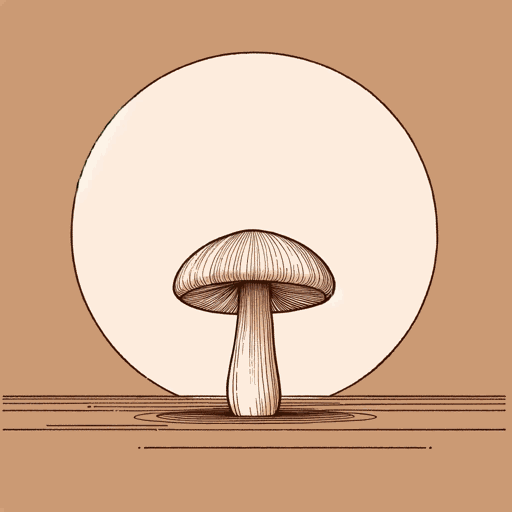75 pages • 2 hours read
Anna Lowenhaupt TsingThe Mushroom at the End of the World
Nonfiction | Book | Adult | Published in 2015A modern alternative to SparkNotes and CliffsNotes, SuperSummary offers high-quality Study Guides with detailed chapter summaries and analysis of major themes, characters, and more.
Summary
Preface
Prologue
Part 1, Introduction
Part 1, Chapters 1-3
Part 1, Interlude 1.1
Part 2, Introduction
Part 2, Chapters 4-7
Part 2, Interlude 2.2
Part 2, Chapters 8-10
Part 2, Interlude 2.3
Part 3, Introduction
Part 3, Chapters 11-13
Part 3, Chapters 14-15
Part 3, Chapters 16-17
Part 3, Interlude 3.3
Part 4, Introduction
Part 4, Chapters 18-19
Part 4, Chapter 20 and Conclusion
Key Figures
Themes
Index of Terms
Important Quotes
Essay Topics
Summary and Study Guide
Overview
The Mushroom at the End of the World is a work of cultural anthropology by Dr. Anna Lowenhaupt Tsing, published by Princeton University Press in 2015. Tsing is a cultural anthropologist who has previously published works on Southeast Asia. Thematically, her work focuses on culture, marginalization, environmentalism, gender, and political economy. She is currently a professor of Anthropology at the University of California, Santa Cruz.
The Mushroom at the End of the World is a sweeping work that crosses many historical periods, geographical boundaries, and cultural contexts. Tsing strives to explain how humanity has reached its current state and how other living things make their own worlds. In focusing on the mushroom, Tsing underlines that no part of life is unworthy of study.
Plot Summary
Tsing uses the life and consumption of matsutake mushrooms to explore larger political, economic, and social questions. She contends that our current age of economic and ecological instability requires explanation and argues that understanding capitalism’s effect on human social practices and ecological systems is imperative. She explains that humans have never been the only actors in nature, nor are human activities the only drivers of economic change or capitalist processes. Instead, natural resources can be incorporated into capitalism at various stages of the production and sale process, a process she calls “salvage accumulation.”
Tsing introduces the matsutake mushroom, its unique smell and cultural status as a prized food in Japan. From there, she describes some history of global supply chains—that is, corporations reliant on goods produced in more than one place to earn profits and the history of matsutake as an export after they became scarce in Japan itself. She stresses that capitalism now depends on what she calls assemblages—gatherings of disparate individuals and living things, that may provide useful resources for market economies and corporations to exploit. Forests where matsutake mushrooms are picked by humans are one such assemblage. Japanese matsutake exporters were willing to operate across multiple cultural contexts, including China and the US, to meet domestic demand for the mushrooms.
To explain more about how this works, Tsing takes the reader into a mushroom camp in the Cascade Mountains of the Pacific Northwest—a variety of sites she writes about pseudonymously as “Open Ticket, Oregon.” The place reminds Tsing of Southeast Asia, as many mushroom pickers are Mien and Hmong people from Cambodia and Laos (others are white Vietnam War veterans). All of them are in search of matsutake because of their personal histories of war, trauma, and displacement. Tsing collects these life stories to illustrate how the history of US involvement in Indochina has had lasting political and economic consequences. Left without security at home, the mushroom pickers go to Oregon and find that the welfare state has been gutted. Unlike Japanese Americans, who were promised the security of the postwar welfare state in exchange for assimilation, Southeast Asian and white pickers find “freedom” in the forest to work outside capitalism. This explains why Southeast Asian pickers do not assimilate by giving up their home cultures and languages, as there is no economic incentive to do so.
Tsing argues that Open Ticket is “pericapitalist” as the mushrooms there become capitalist commodities once they are shipped to Japan. In Japan itself, they acquire other cultural significance, because they are frequently brought as gifts or to cement other social rituals. Salvage accumulation and the creation of global supply chains are omnipresent, Tsing argues, but Japan has a key role in their history which belies the usual emphasis on the global significance of the US economy.
Tsing then turns to how forest management has led to a landscape where matsutake are scarce in Japan but abundant in Oregon, Finland, and parts of China. She explains that this, too, is a story of capitalist resource extraction and supply chains. Japanese forest management after WWII came to involve cutting down pine trees to build tree plantations, which deprived matsutake of a host. White colonization of Oregon and export of wood to Japan led to ruined forests of lodgepole pine, which are a thriving host for matsutake. Finnish forest management emphasizes order and makes space for pine to grow.
Tsing also considers the mushroom itself, its relationship to host trees, its germination practices, and how scientists follow mushroom genes. She uses these interludes to demonstrate that the life of mushrooms is complex and not always subject to predictable linear rhythms.
Finally, Tsing briefly revisits the four countries central to her field work. She finds self-proclaimed Matsutake crusaders in Japan, eager to revitalize pine forests and find more meaning in nature. Tsing sees some hope in the curiosity of children. She finally concludes that the search for more stories like hers, where there is no single hero, and storytelling itself is an act of perpetual curiosity like a walk in the woods.

